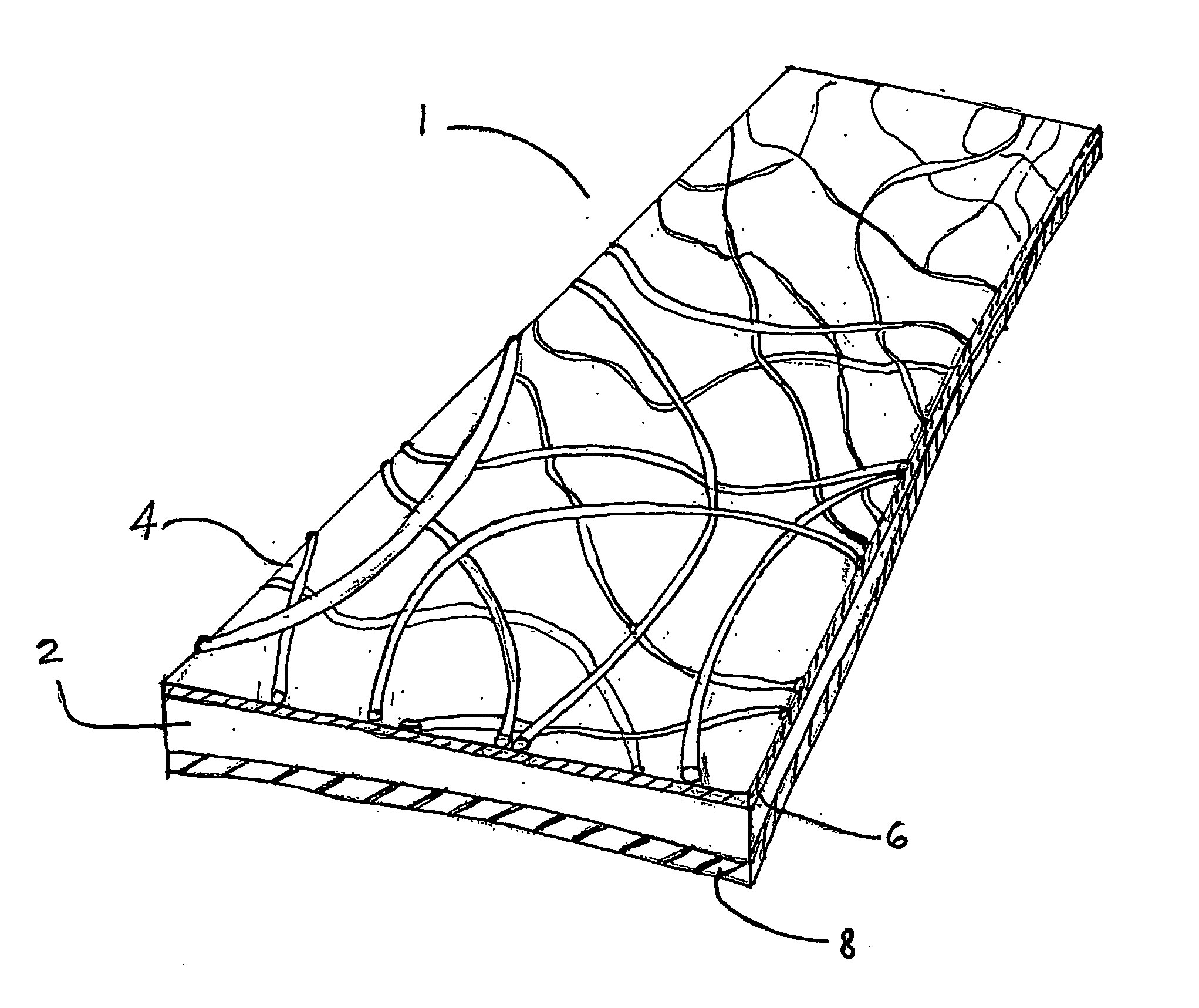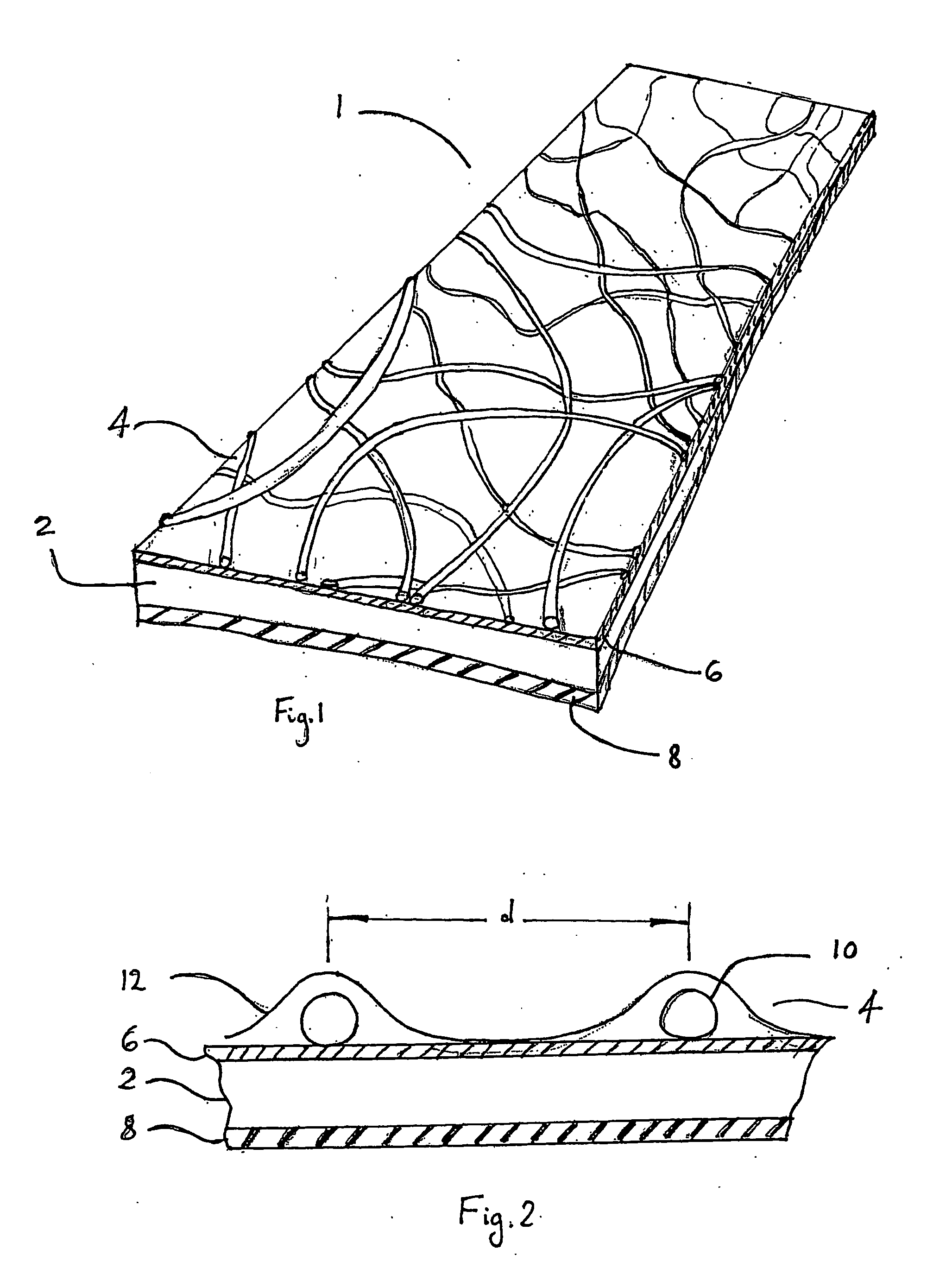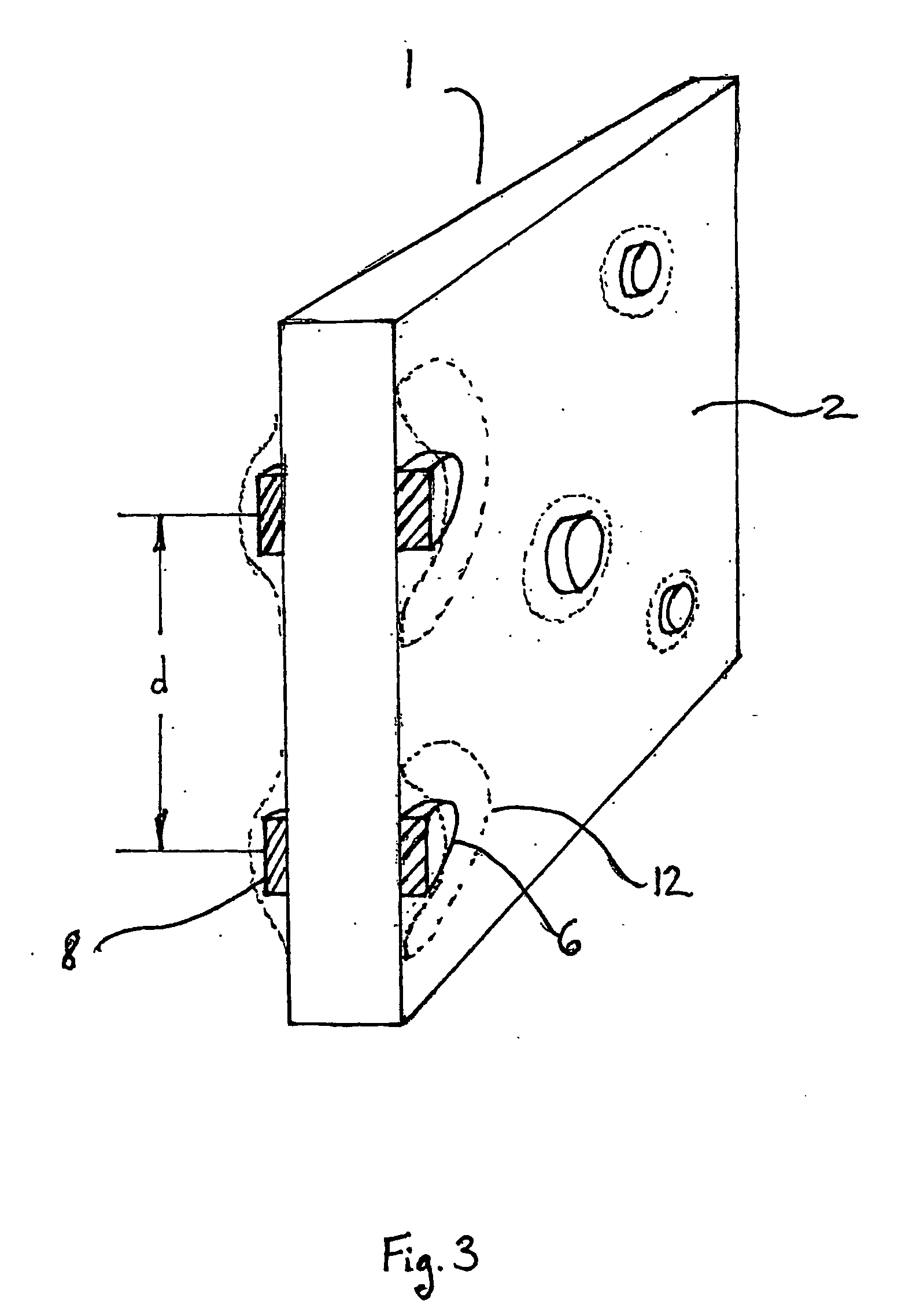Heat Exchange Laminate
- Summary
- Abstract
- Description
- Claims
- Application Information
AI Technical Summary
Benefits of technology
Problems solved by technology
Method used
Image
Examples
Embodiment Construction
[0032]According to FIG. 1, there is depicted a section of a heat exchange laminate 1 illustrating the individual layers. Laminate 1 comprises a carrier layer 2 covered over its first surface by a liquid retaining layer 4. A first adhesive 6 is provided between the carrier layer and the liquid retaining layer. A second adhesive 8 is also provided on the second surface of the carrier layer 2. In this embodiment, the presence of second adhesive 8 is optional and its function will be described in further detail below.
[0033]Carrier layer 2 is preferably formed of soft annealed aluminium having a thickness of approximately 70 microns. This material has been found to be extremely advantageous as it is light, easily formable and has good conductivity. The aluminium is provided on both surfaces with a primer (not shown) to ensure adequate bonding with the adhesives 6, 8. The primer is preferably a PVC based primer and may be coloured to provide a desirable appearance to the laminate 1. Furth...
PUM
| Property | Measurement | Unit |
|---|---|---|
| Thickness | aaaaa | aaaaa |
| Flexibility | aaaaa | aaaaa |
| Electrical conductor | aaaaa | aaaaa |
Abstract
Description
Claims
Application Information
 Login to View More
Login to View More - R&D
- Intellectual Property
- Life Sciences
- Materials
- Tech Scout
- Unparalleled Data Quality
- Higher Quality Content
- 60% Fewer Hallucinations
Browse by: Latest US Patents, China's latest patents, Technical Efficacy Thesaurus, Application Domain, Technology Topic, Popular Technical Reports.
© 2025 PatSnap. All rights reserved.Legal|Privacy policy|Modern Slavery Act Transparency Statement|Sitemap|About US| Contact US: help@patsnap.com



